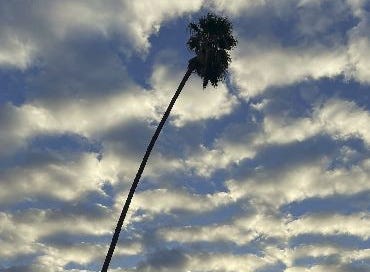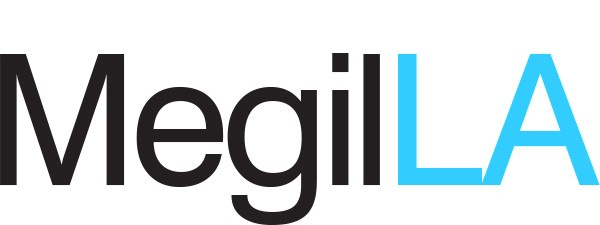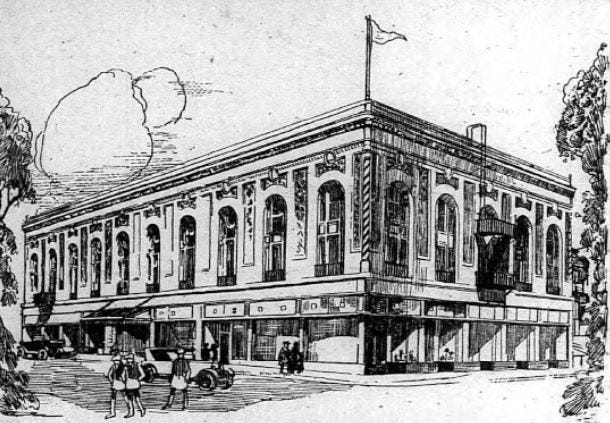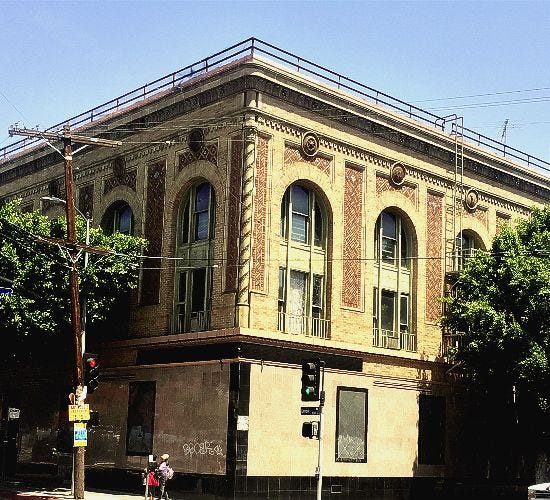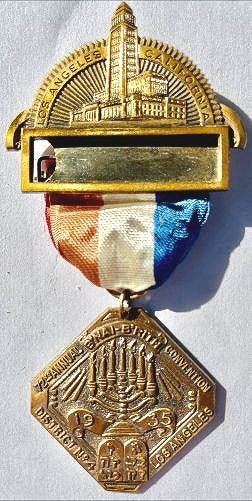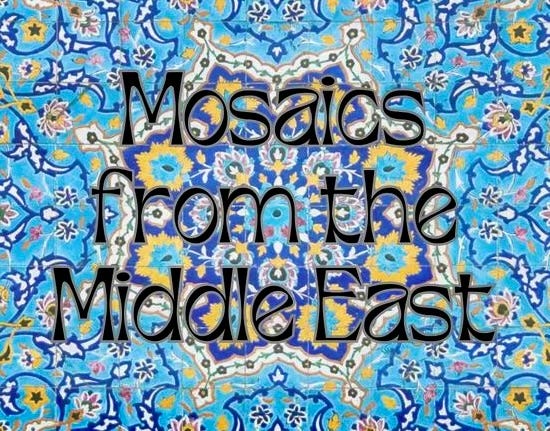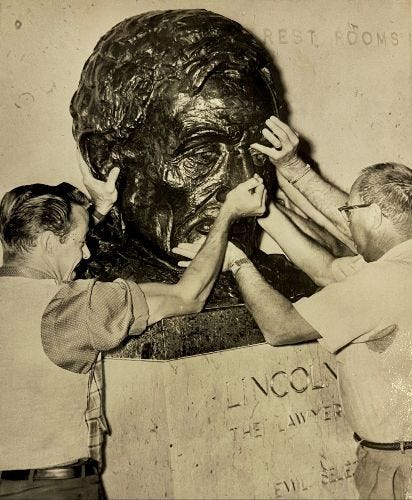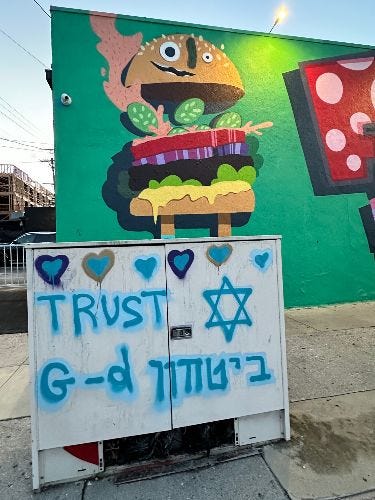A New Scroll of LA Jewish News
Photo: Brenda Rodman
Folks,
On the days following our recent wet winter storms, we step outside to survey the damage; to see what survived intact, what can be mended, and what needs to be replaced. So it was this week when I received an email from American Jewish University President Dr. Jeffrey Herbst and Milken Community School Head of School Dr. Sarah Shulkind. The news: The AJU campus has been sold to Milken. The letter goes on to basically say this is a win-win: AJU can invest the proceeds into its mainly online educational efforts, and Milken can grow its footprint. So why do I feel like I’m looking at a bed of broken flowers? Some of my sadness is about history. My mother, along with thousands of other southland Jewish women, as members of Conservative temple Sisterhoods, spent countless hours volunteering and raising donations to help to build the original University of Judaism that opened at its new location in 1977. Where is even a simple “Thank you” for their dedication and sacrifice? Some of my sadness is about books and the availability of community resources. Though the letter mentioned that the campus’s Mikveh will remain open (for around three years), there was no mention of what will happen to AJU’s Ostrow Library, or art collection for that matter. Already mostly inaccessible in its Bel Air location, to where will this collection of over 284,000 print and e-book titles move? Farther out to AJU’s location in Simi? After this rain of AJU news, I would really love to see new growth and conscious replanting, but for now I’m only raking-in the loss.
MegilLA needs renewal and growth too! As an independent Jewish journalist, I am adding a creative and concerned voice to the conversation about events and their impact on our Jewish community. I need your help to keep this publication branching out into new areas. Please subscribe to MegilLA today.
Shabbat Shalom.
Edmon J. Rodman
////\/\\\\
////\/\\\\
Will B'nai B'rith building be bulldozed?
A illustration of the B'nai B'rith Lodge building in 1924.
Edmon J. Rodman
A historically important Jewish building constructed 100 years ago is in danger of being turned to rubble. The former B’nai B’rith building, home of Lodge Chapter 487, in its time was a cultural and organizational center for LA’s expanding Jewish community.
The brick building, designed by a notable Jewish architect, Samuel Tilden Norton, standing three stories tall and spanning 20,775 square feet was a source of Jewish communal pride. (See a "Dronescape" of the building HERE. )
Located at the corner of Union and 9th streets (today, James M. Wood Boulevard), the building was close to where many Jews had moved, and opened businesses.
Purchased by Catholic Charities Inc. in 2018, which has offices nearby, the organization has sought a demolition permit since 2019, saying in its petition that the building was “plagued by mold and structural and seismic insecurities.” The building’s future, is now before the Los Angeles City Council for a vote.
A local preservationist and advocate, Richard Schave, with historic roots within LA’s Jewish community, is deeply involved, along with a group of local preservationists with the effort to save the Beaux Arts structure.
The building “Was to be the center of the Jewish cultural, educational and social opportunities as the community sought wider acceptance in Los Angeles,” said Schave.
For Schave, the neighborhood in which the building is situated is not just a square on a map. “My grandfather’s pharmacy, Union Pharmacy, was across the street,” he recalled.
Catholic Charities, also with a stake in the neighborhood, though contacted to participate in this article, did not respond.
According to the organization’s website, Catholic Charities “is committed to manifesting Christ’s spirit by collaborating with diverse communities, providing services to the poor and vulnerable, promoting human dignity, and advocating for social justice.”
Almost one hundred years earlier, similar ideals, in a different spirit, were expressed by B’nai B’rith.
On October 28, 1924, the day the building was dedicated, B’nai B’rith Lodge past president Marco N. Newmark (a son of Harris Newmark) presented the key of the building to the organization’s then president. “Open ye the gates and let the light enter,” he said, hoping that the idealism that inspired past community builders would “continue to influence the members in the interest of Benevolence, Brotherly Love and Harmony,” reported the B’nai B’rith Messenger.
That day the “audience had come to cheer and laugh—to applaud and celebrate,” said the Messenger. “They also had come to feel and to be inspired,” saying a “Shehechayanu,” a Hebrew blessing Jews often say when experiencing something new.
Beyond the words spoken at the dedication, attended by about 1800 B’nai Birth brothers, their families, and others in the Jewish and greater LA communities, the building itself was an inspiration and represented a new level of acceptance. It stood “as a monument to the endeavor of Los Angeles B’nai B’rith and a tribute to Los Angeles Jewry as a whole,” said the Messenger.
Speaking to what the building added to Los Angeles, Rabbi Edgar F. Magnin of Congregation B’nai B’rith said, as paraphrased by the Messenger, that Jews injected their “own energy and enthusiasm into the upbuilding of the community.”
Part of that upbuilding was the structure itself.
The exterior of the building was constructed of ornamental brick, designed to resemble the pattern of an oriental rug. Terra cotta spirals pieces created by now famous artist Ernest Batchelder, accented the building’s corners.
The lower level consisted of a reception hall which was surrounded by offices. A grand staircase led to the lodge meeting hall on the second floor which included a stage complete with changing rooms.
Adding to the structure's communal appeal, the third floor held a ladies lodge room and dining room.The basement was equipped with a swimming pool, lockers and showers.
Adding income to B’nai B’rith’s account, along the ground floor were eleven retail storefronts.
Along with the regular weekly B’nai B’rith meetings “there were concerts, dances, Anti-Defamation League meetings, and yearly High Holy Days services” wrote preservationist Steven Luftman, in a Historic-Cultural Monument application (Read it HERE) that ultimately was not approved. “Additionally, the hall was rented out to diverse groups including the Church of Jesus Christ of Latter-Day Saints for a Christmas party, and the French colony of Los Angeles for a Bastille Day pageant,” said the report.
With both LA City Hall and a menorah, this medal from a local 1935 B'nai B'rith convention, illustrates the connection between city and organization.
The building’s life did not end when B’nai B'rith sold it in 1930, due to the financial burden the building presented in the early years of the Depression.
“From 1941 to 1978, the building was at the center of the Teamsters Union’s activities in Southern California,” said Schave. “It was here in 1962 that John T. Williams made history as the first African-American elected to a leadership position by the union in California,” he added.
“This building is an excellent candidate for adaptive reuse,” said Schave, who with his wife Kim, has gained an intimate knowledge of Los Angeles from running a local tour company, Esotouric. “The property includes an adjacent parking lot suitable for development that is more than twice the footprint of the subject historic resource,” he said.
At least one architectural historian, Nathan Marsak, who calls himself “The Cranky Preservationist” (WATCH his video HERE), has voiced his concern about the building’s potential demolition. The building “was a center of Jewish life,” said Marsak. “Why not leave the building?” he asks, suggesting that due to the high cost of new construction, it might be better for Catholic Charities to rehab the existing structure to house their programs.
On the day of the building’s dedication, Mrs. Adolph (Bertha) Sieroty, President of the Women’s Auxiliary, spoke about “bringing relief to the sick and the needy.” A moving rendition of “Kol Nidre” was performed on the violin. Rabbi Magnin told the audience that the Jewish purpose in life was “teaching the nations of the world true brotherly love.”
“The building tells the history of the Los Angeles Jewish community,” said Schave.
The President of the Los Angeles City Council, Paul Krekorian, can be contacted about the B’nai B’rith building at his office at (213) 473-7002, or at councilmember.Krekorian@lacity.org.
////\/\\\\
Vox femina sings of the Middle East
VOX femina Los Angeles, a groundbreaking women’s choral group, will present an intriguing free concert, “Mosaics from the Middle East,” at Pico Union Project, Sunday March 3, at 3 p.m.
With music adapted from both Arab and Jewish traditions, the concert will explore “the shared experiences of motherhood, prayer, grief, and a wish for peace,” said the group’s website.
Conceived more than a year before the October 7 attack in Israel, the program is "An exploration of Arab and Jewish music representing Israel, Palestine, Syria, and Jordan," as well as music of the Jewish diaspora, and American settings of Arabic texts and music.
Through melodies and lyrics from poets such as Natan Yonatan and Mohja Kahf, “the performance will shine a light on the humanity of two distinct Middle East cultures.”
Premiering Sunday afternoon will be new commissions by Alex T. Favazza with text by Palestinian American Raneen Sfeir, and by Pico Union Project founder and artistic director Craig Taubman, performing his new composition for “Shalom Aleichem.”
For free tickets RSVP HERE
////\/\\\\
Live from the Archive*
Where is Abe's head?
With Presidents Day this week, our eyes turned to a photo of a 300-pound bronze bust of Abraham Lincoln, sculpted in 1958 by Dr. Emil Seletz, a Los Angeles neurosurgeon, writer, and sculptor who was Jewish.
Seletz’s sculpture, “Lincoln the Lawyer,” was originally placed in the lobby of new LA County Courthouse. Soon, however, in 1959, without as much as a heads-up, it was suddenly re-located to the second-floor lobby of the Kenneth Hahn Hall of Administration building.
The bronze head was moved on the tinniest of complaints.
Dr. Seletz was well-known and respected, and often was called to court as an expert medical witness in personal injury cases where his testimony was very effective. In what seemed like retaliation, the Los Angeles Bar Association complained that on occasion Seletz had been identified by attorneys as the creator and donor of the bust, and that this identification might influence juries.
Seletz, born in 1907 (he died in 1999), served as Chief of Neurosurgery at Cedars of Lebanon Hospital. He later was professor of neurological surgery at the USC School of Medicine.
In addition to the bust of Lincoln, Seletz created bronze likenesses of Mark Twain, Franklin Roosevelt, Albert Einstein, Will Rogers, and Rabbi Jacob Kohn, the long-time rabbi at Sinai Temple, among many others.
In 1956, Cecil Smith, in an article in the Los Angeles Times, wrote “Dr. Seletz works with bronze in a hobby that brings nearly as much fame as his practice. Dr. Emil Seletz is a man of two worlds. And a champion of each.”
*The Rodman Archive of Los Angeles Jewish History is a collection of approximately 1000 objects, photos, clothing, art, books, recordings, and ephemera relating to the lives and endeavors of Jewish Angelenos between 1850 and 1980.
Seen on the Way: Pico-Robertson
Photo https://www.jethrosingerphotography.com/
We generally don’t look to the side of a delicatessen for philosophical statements about faith, but there it is, the Biblical Hebrew word bitachon (pronounced bee-tah-khohn) spray painted on a curbside mechanical panel near the side of Factor’s Deli. Generally translated as “trust,” the word represents, according to the Orthodox Union, “a sense of depending” on God to “watch over and protect” us, even if we have just eaten too-big of a corned beef sandwich.
////\/\\\\

